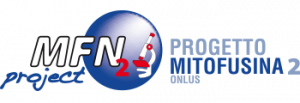DEVELOPMENT OF A STEM CELLS-BASED APPROACH FOR THE TREATMENT OF CMT DISEASE ASSOCIATED WITH MITOFUSIN 2 GENE MUTATIONS (CMT2A2)
Updated in November 2013
Corti S., Rizzo F., Ronchi D., Del Bo R., Nizzardo M., Comi G.P.
Charcot-Marie-Tooth disease type 2A (CMT2A), the most common type of CMT2, is caused by mutations in the mitofusin 2 gene (MFN2). For CMT2A treatment, no effective therapy is available. In this project, we propose two different approaches as a possible therapeutic strategy: one based on cell therapy and second on Morpholino antisense oligomer. To test these strategies, we will use MitoCharc1 mouse model, characterized by R94Q (Arginine to Glutamine) amino acid substitution to mimic the most common mutation found in CMT2A (Cartoni R et al.; 2010).
Regarding cell therapy strategy, a possible approach is to perform transplantation of stem cells to deliver growth factors which could have a therapeutic role on CMT2A neurons. In fact we have previously demonstrated that neural stem cell (NSC) transplantation can improve the phenotype in motor neuron disease (MND) mouse models (Corti S. et al.; 2006-2010). Growth factors such as Glia-derived neurotrophic factor (GDNF) are known to have neuroprotective effects in vitro and in vivo models of neurodegenerative diseases (Henderson CE et al.; 1994; Suzuki M et al.; 2007; 2008). Based on these data, we will evaluate the therapeutic potential of human NSCs and Myogenic Stem Cells (MySCs) obtained by patient specific Induced Pluripotent Stem Cells (iPSCs), alone or combined with growth factors delivery. Our goal is to isolate and characterize NSCs and MySCs from iPSCs, to genetically manipulate them to overexpress GDNF and to define an adequate transplantation protocol for their delivery into MitoCharc1 mice (intrathecal of NSCs and intramuscular of MySCs). Once determined survival and differentiative fate of NSCs/MySCs following transplantation, we will investigate the potential of wild-type and genetically modified NSCs/MySCs in protecting neurons and neuromuscular junctions improving neuromuscular functions.
Concerning Morpholino antisense oligomer strategy, we would like to use phosphorodiamidate morpholino (MO), third-generation backbone-modified antisense oligonucleotides (ASO), is designed to reduce human MNF-2 protein level. The use of MO can offer great promise for treatment of human disease, based on data recently described about motor neuron disease mouse models (Porensky PN et al.; 2011). In this project, we want to transfer this approach into CMT2A field. In particular we will test MO sequences, capable to silence MNF2 protein, in human or mouse cell lines to evaluate in vitro protein level reduction. Then we define the best MO administration protocols into MitoCharc1 mice, determining the dose and modalities of injection, considering the local (intracerebroventricular and/or intratechal) and/or systemic (intravenous) approaches. We will study the biodistribution of MO and their capacity to decrease mRNA and protein MNF-2 level in the mice by gene expression and protein analysis. We will also evaluate therapeutic efficacy of MO in improving neuromuscular phenotype, delaying disease progression and providing a survival benefit in treated MitoCharc1 mice. Our intention is to define a pre-clinical protocol with morpholino to high reduction of MNF2 level with minimum toxic consequences, offering a therapeutic clinical realistic approach.

